Martin Classical Guitars
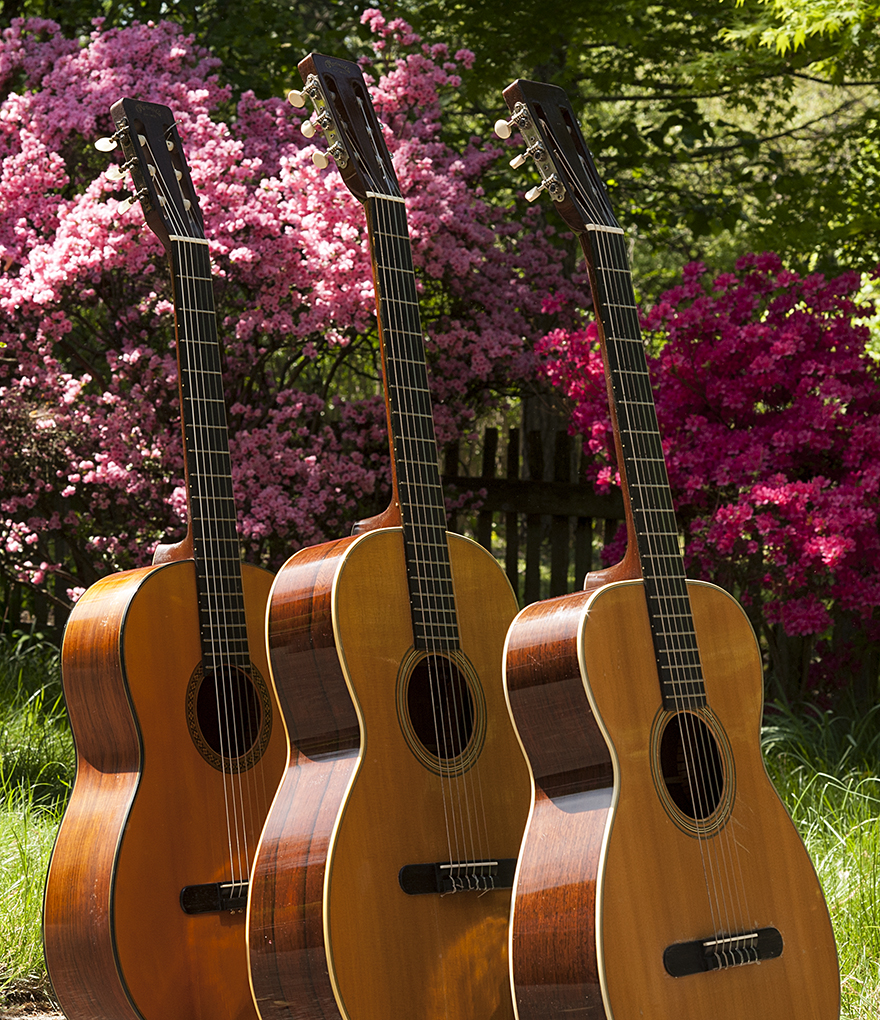
Nearly all Martin guitars were shipped with gut strings until the advent of steel string Hawaiian guitars in 1916.
Beginning in 1922, Martin began the process of shipping all guitars intended for "Spanish" style playing with steel strings, beginning with the Style 2-17 in 1922,
the Style 18 in 1923, and the Style 28 in 1926, with guitars "regulated for gut strings" available on special order.
With the introduction of the gut string "G" series guitars in 1936, Martin once again offered a model intended for "Classical Style" playing.
The G Series was replaced by by the "Classical" 000-28C from 1962 to 1969, and the 00-28C from 1966 to 1995.
The mahogany N-10 and rosewood N-20 appeared from 1968 to 1995.
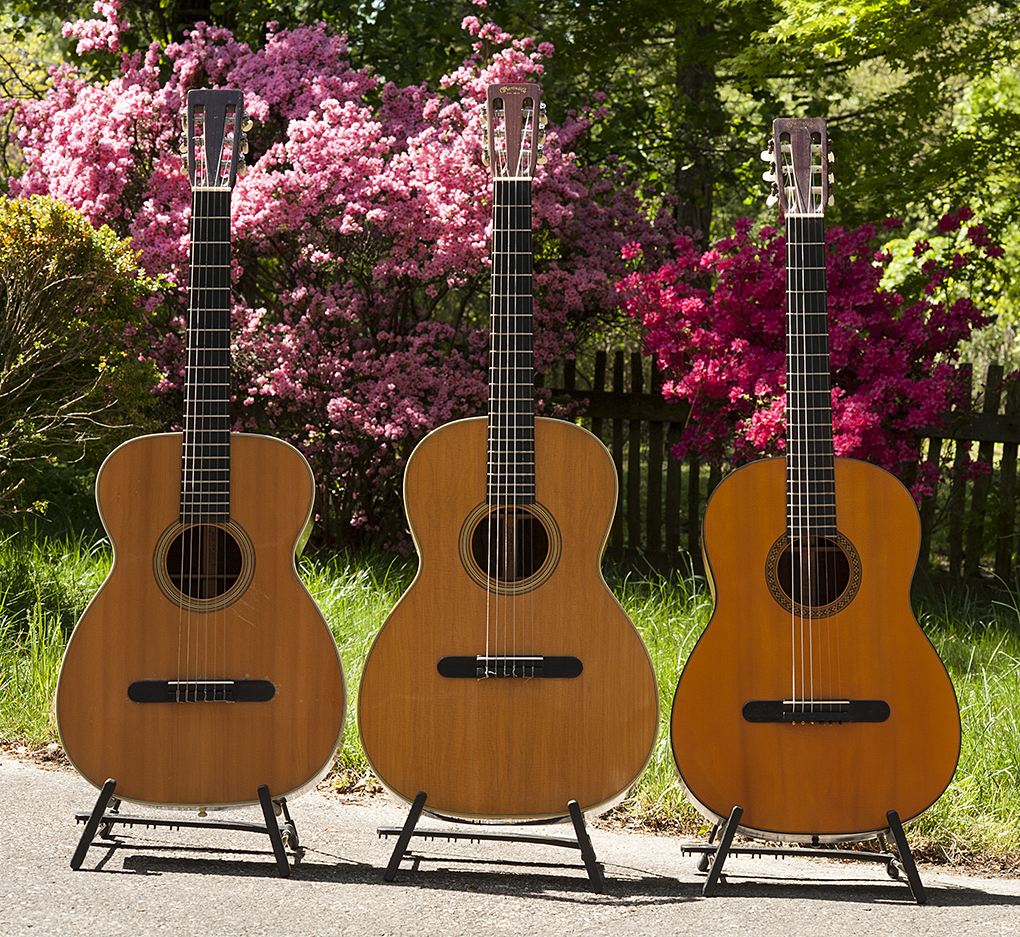
The 1958 Martin 00-28G, 1962 Martin 000-28C, and 1968 N-20.
The N-20 was made famous by Willie Nelson's guitar, "Trigger".
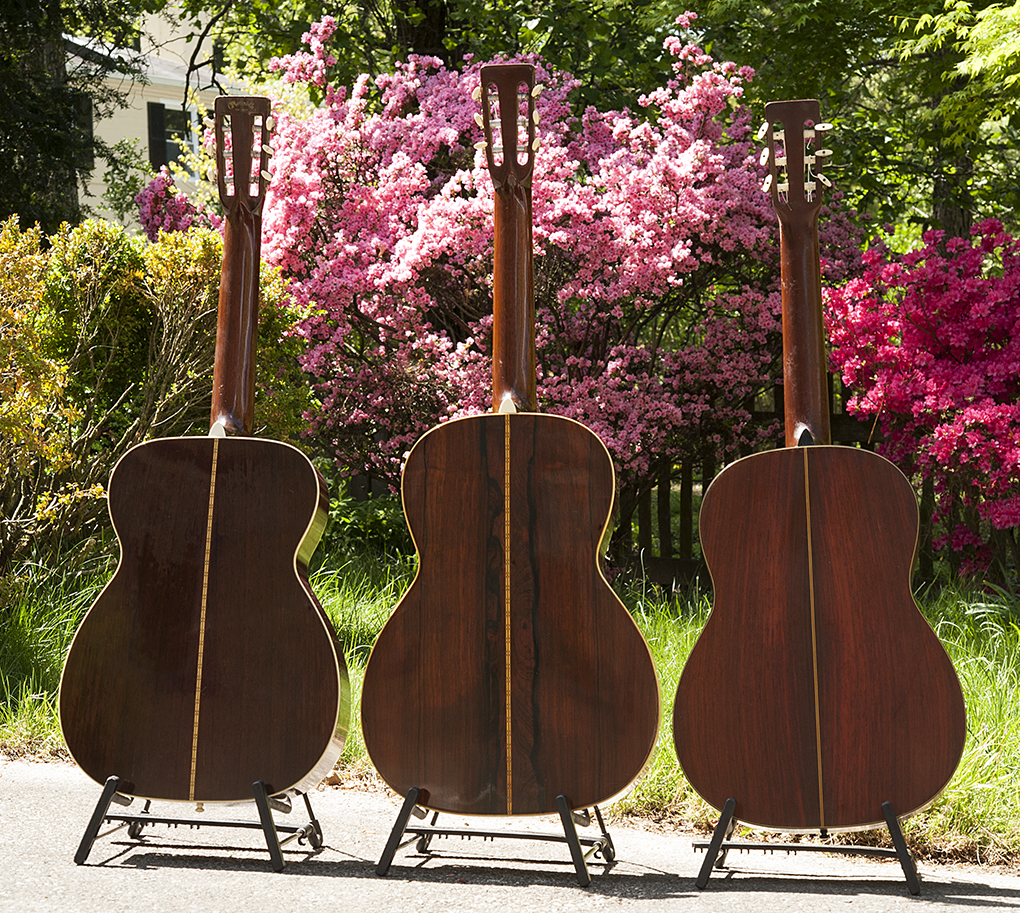
Classical Bridges
Surprisingly to many, the first gut string Martins had bridges with pins. The earliest style was the "moustache" bridge, with a fretwire saddle, which appears on early Stauffer and Martin "Stauffer Style" guitars.
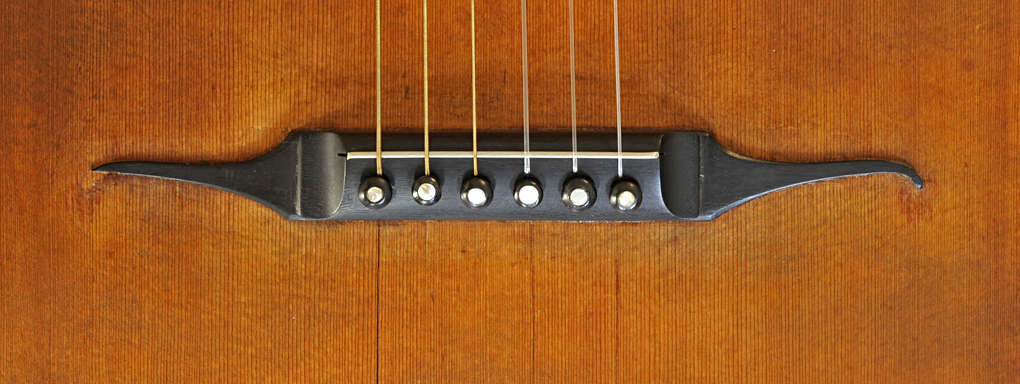
While the pin style bridge is generally associated with steel string guitars, you can see that Martin used pin style bridges with gut strings close to 100 years before introducing steel string guitars.
A number of early Martin, Martin & Coupa, and Martin & Schatz guitars, such as this one, have the "badge" or "shield" style bridge, in either ebony or ivory, here seen with an added "flower" or pendant. Some ivory versions have a fretwire saddle similar to those on the Stauffer "moustache" bridges. Some have a simple "drop in" ivory saddle such as this.
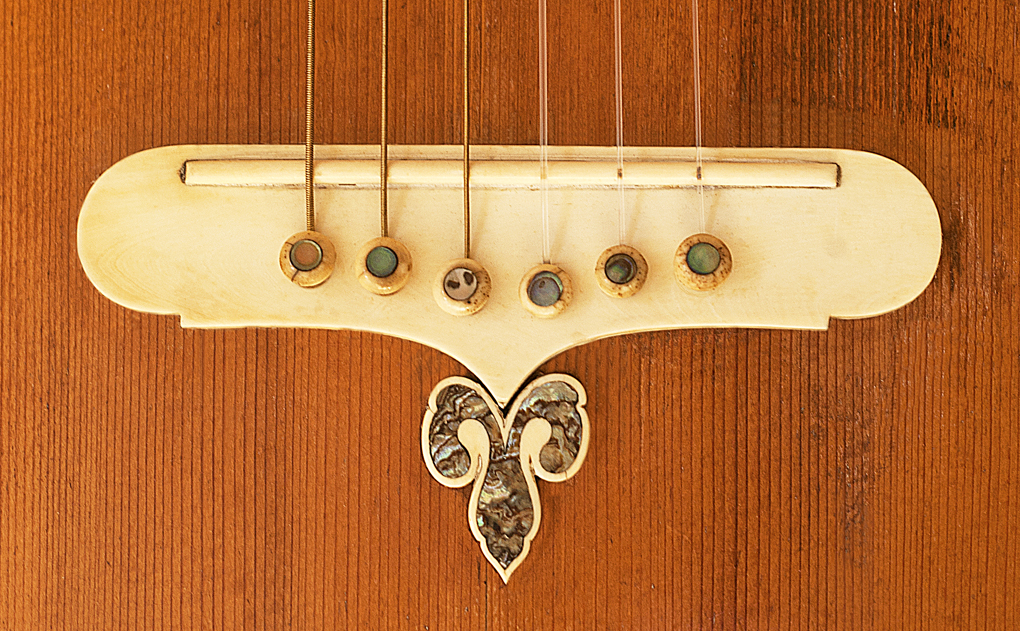
This Martin & Coupa has an ebony version with an ivory pendant.
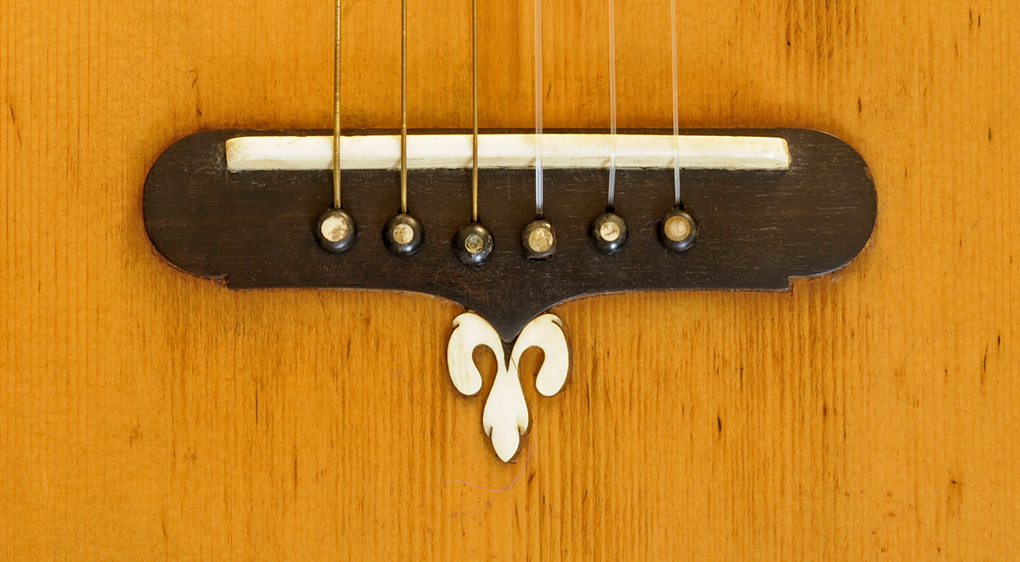
Many early Martin and Martin & Coupa guitars have a pyramid "tie" style bridge, such as those seen on early guitars from Spain.
Early versions, such as on this Martin & Coupa, are ebony with a wide ivory saddle which curves up to form a clean edge:
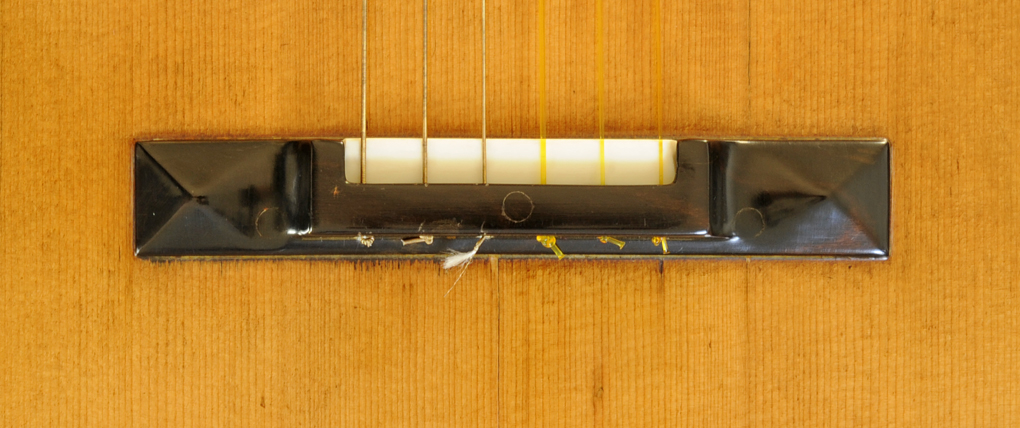
This Spanish style Martin, probably slightly later, has an ivory version of the tie style pyramid bridge, still with a wide curved ivory saddle.
The ivory tie style pyramid bridge is 25/32" x 5 29/32". The ebony tie style pyramid bridge above is a quite differently proportioned 29/32" x 1 27/32"
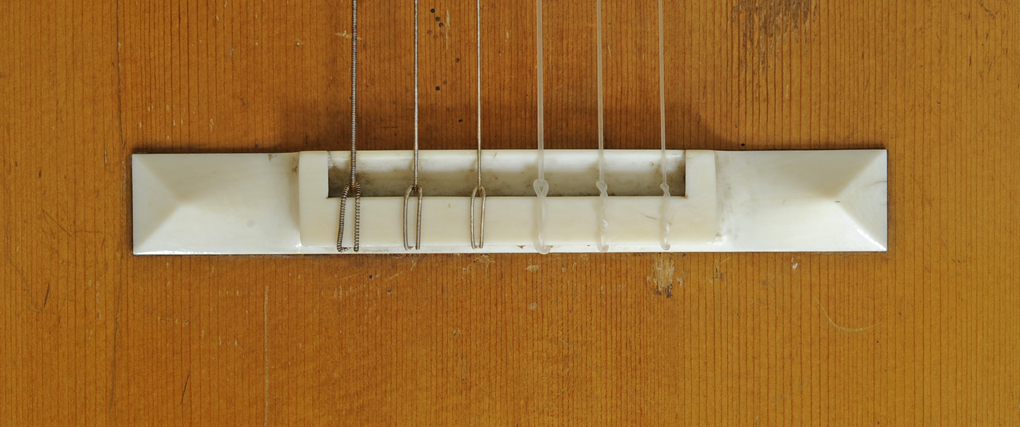
Martin revived the tie style bridge for it's later classical guitars such as the 000-28C of the 1960's, once again with an ivory saddle with no compensation.
The bridge measures 7 1/4” x 1 1/8” and is 7/16 high with saddle.
1962 000-28C
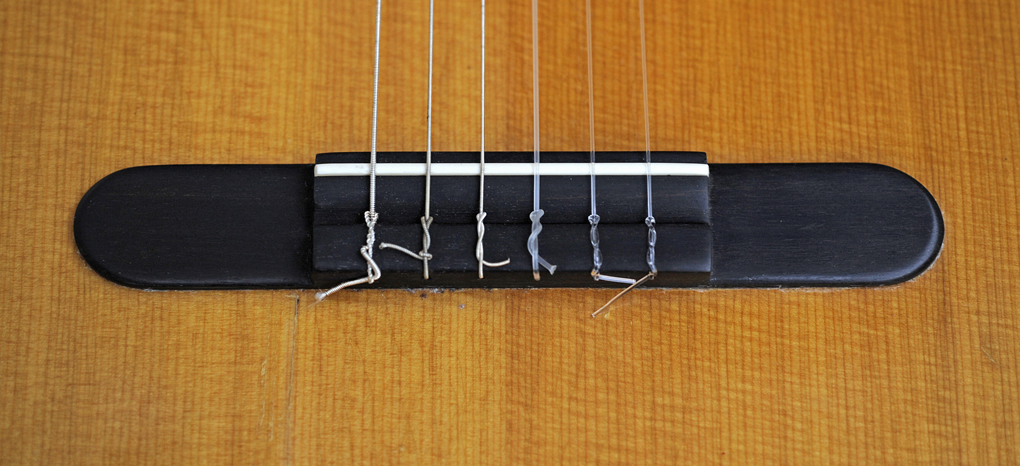
Classical Braces
While the earliest Martin guitars were ladder braced, Martin was influenced by Spanish builders in the 1840's and began adopting the fan bracing employed by the Spanish Style guitar, such as this 1845 Jose Recio of Cadiz:
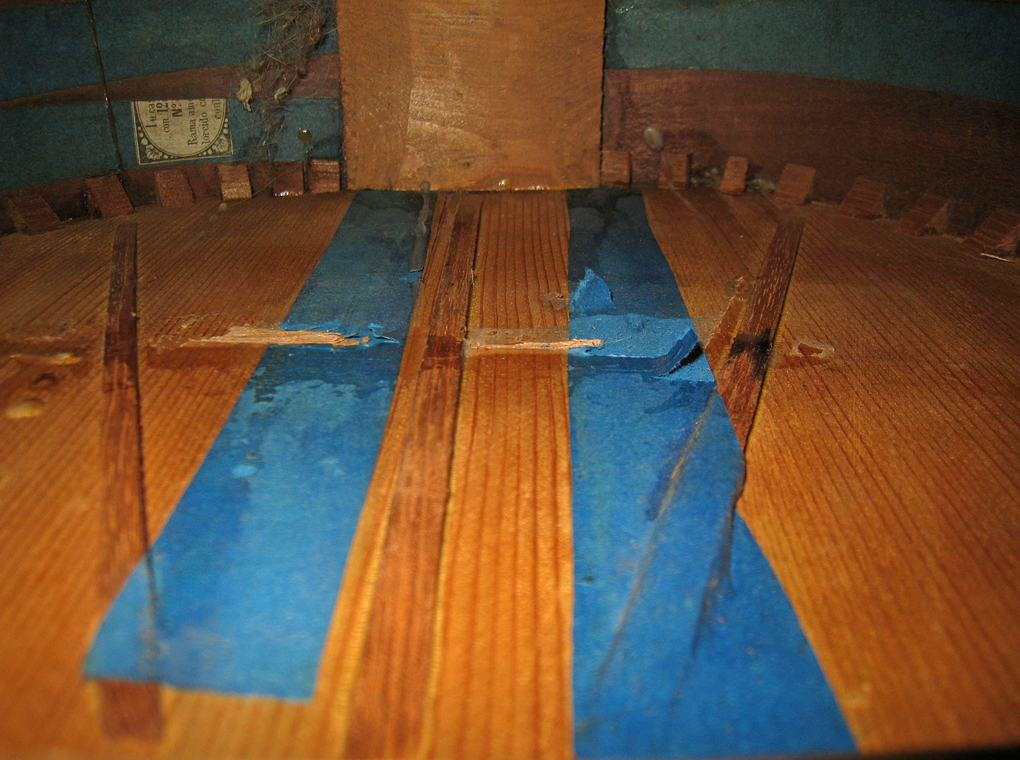
Panormo was a prolific London luthier who built in the Spanish Style. Martin may also have been influenced by the Spanish Style guitars of Panormo, who's son in law was the first classical guitarist to perform in the United States.
1832 Panormo
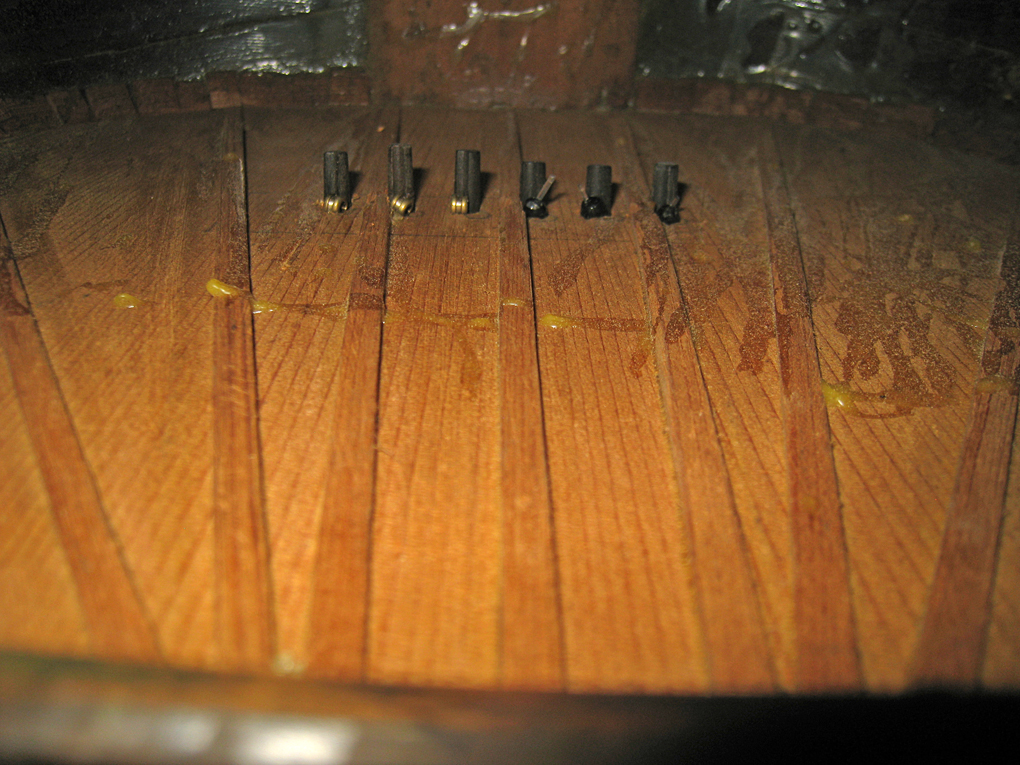
Some early Martins had fan bracing with three blades to the fan, while others had five.
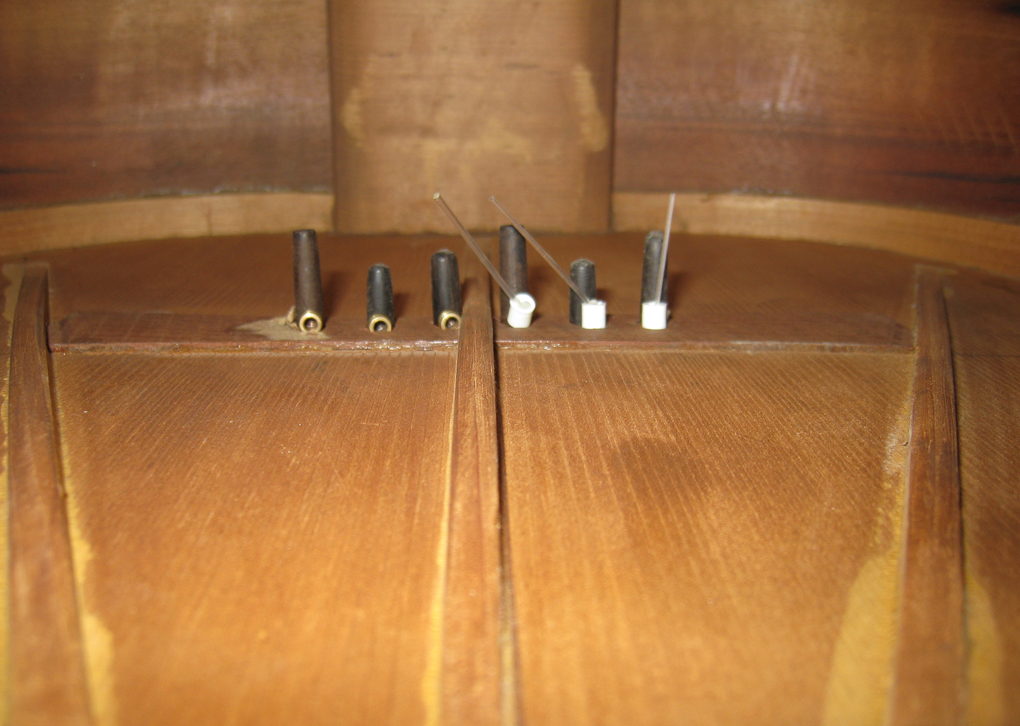
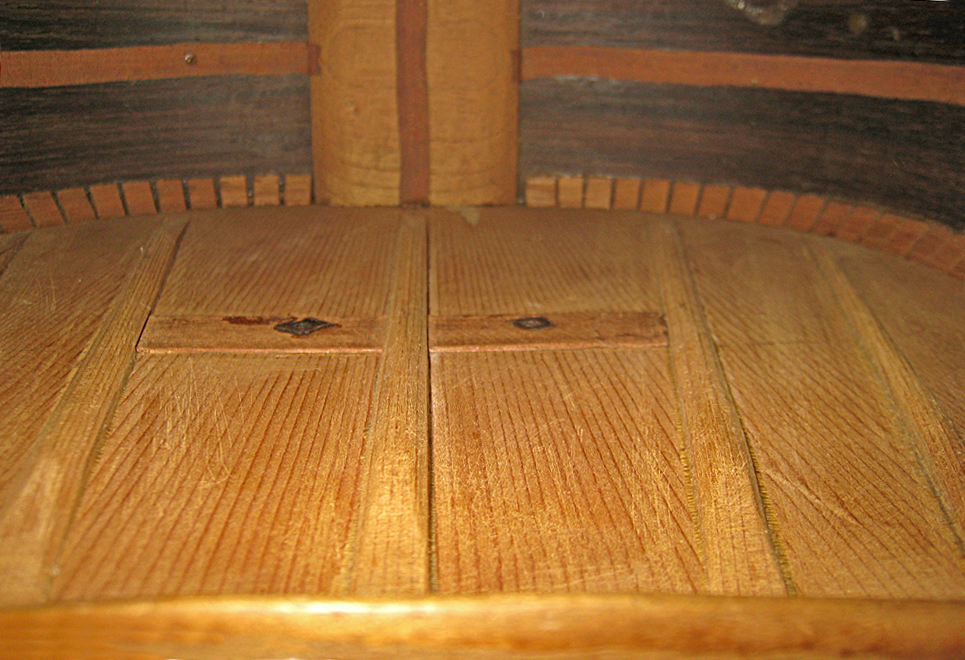
1958 Martin 00-28G
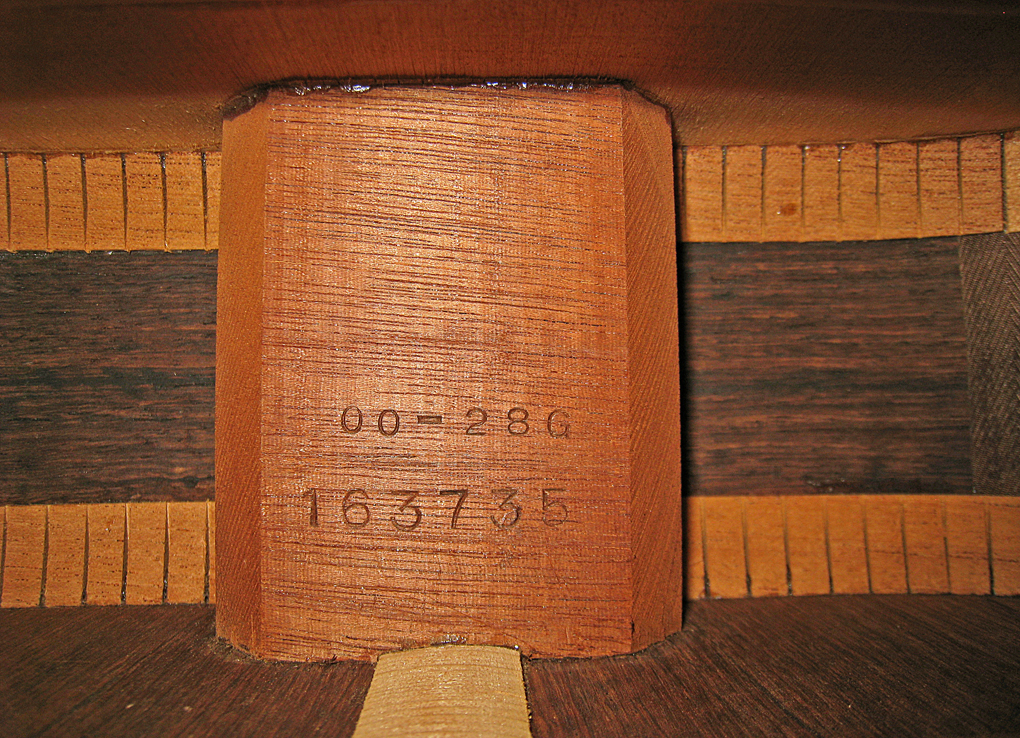
The 00-28G and 00-28C both feature the fan bracing with three struts and mahogany bridge plate seen on the earliest Spanish Martins in the 1840's
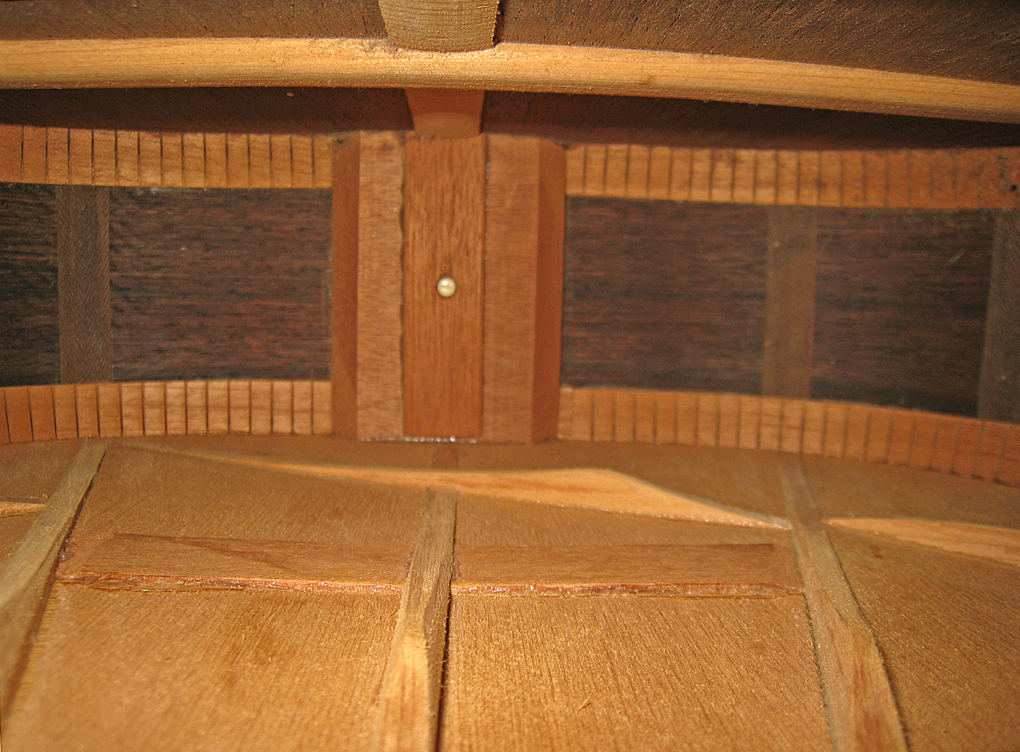
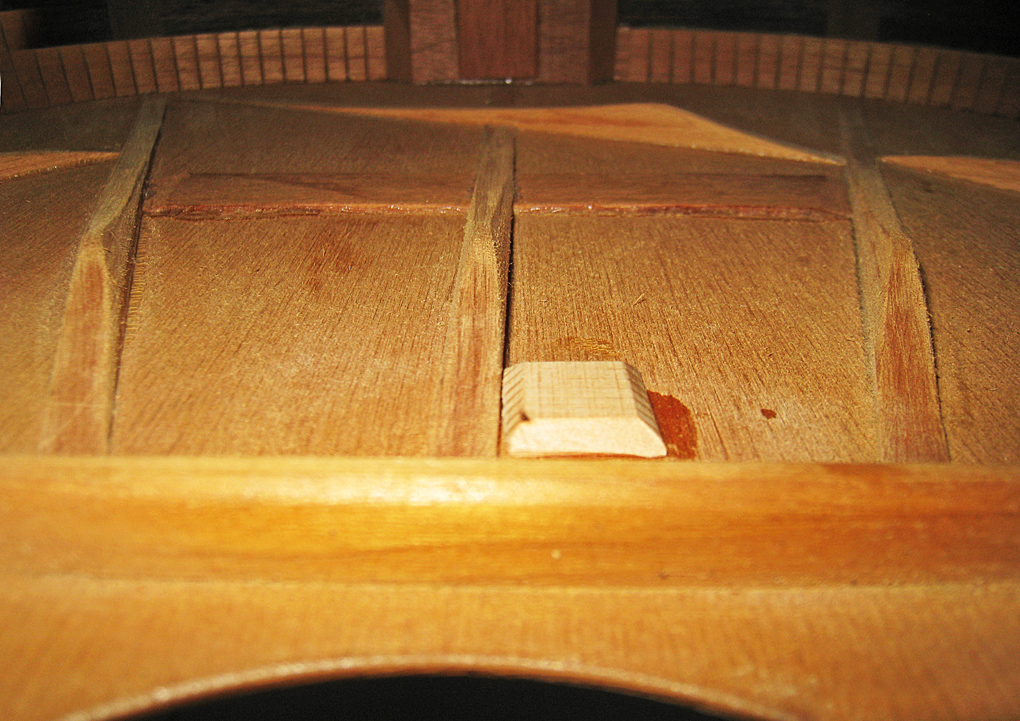
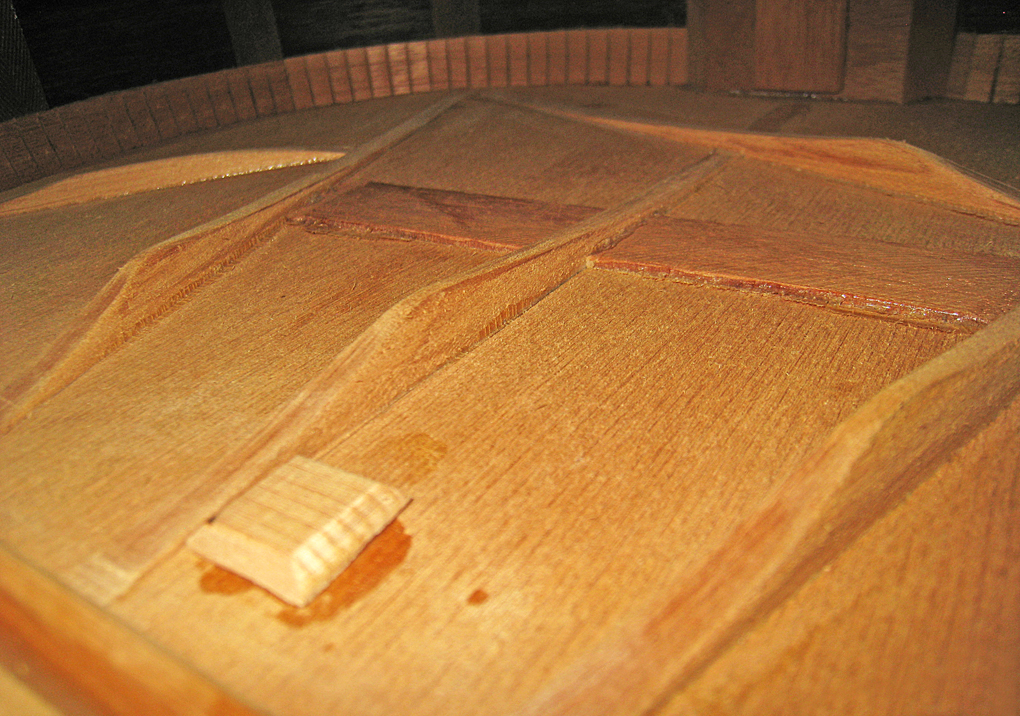
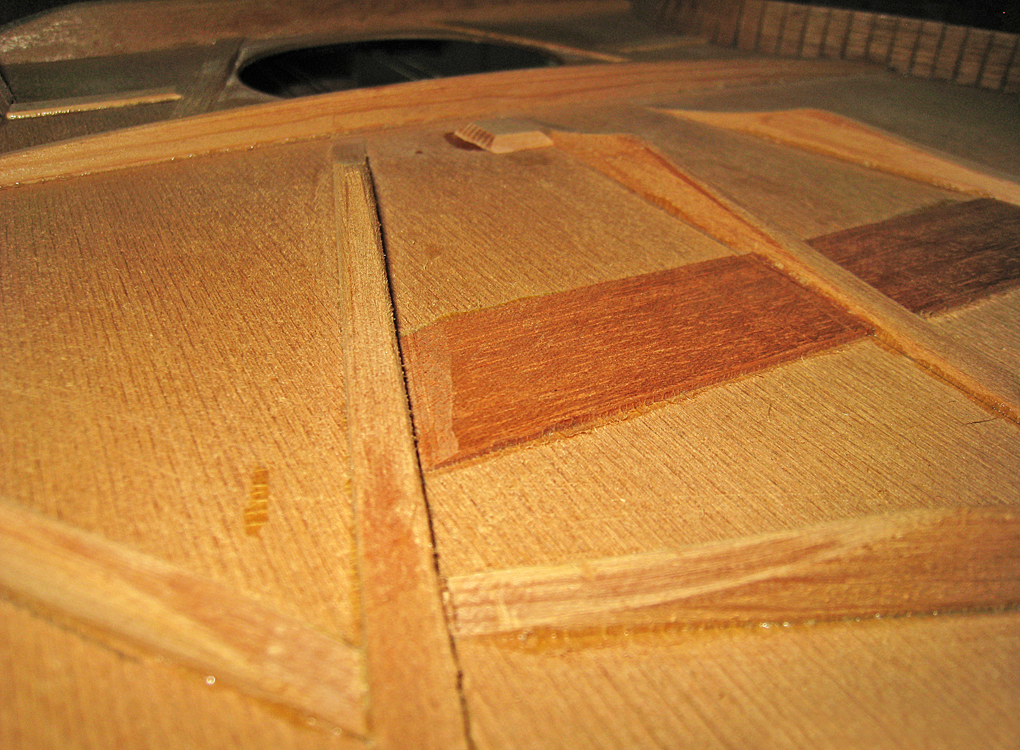
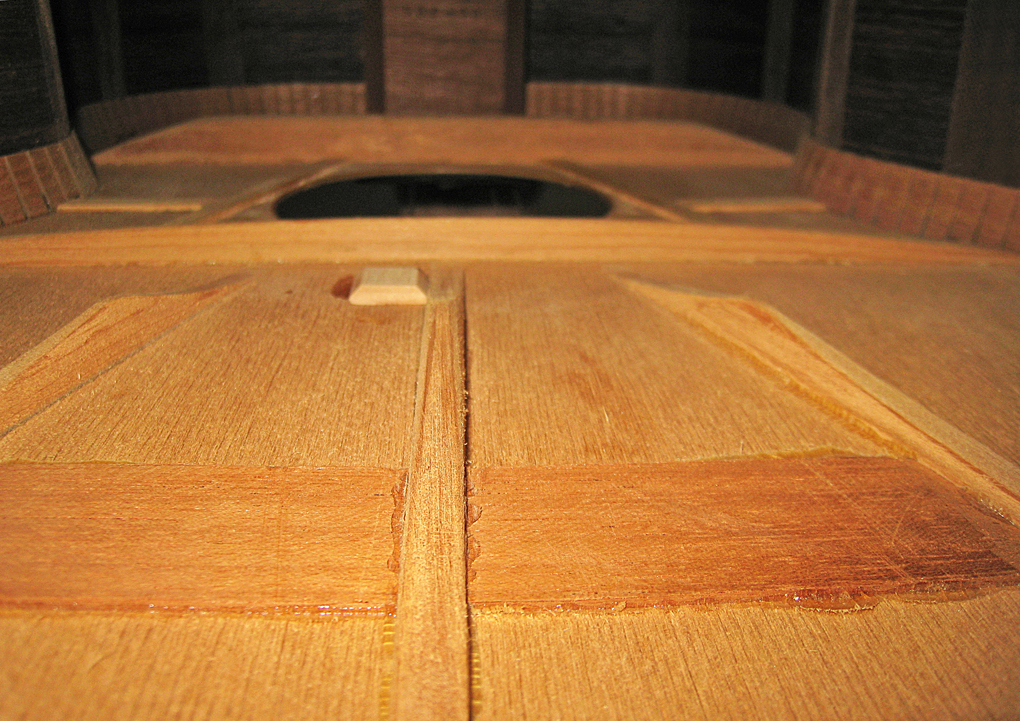
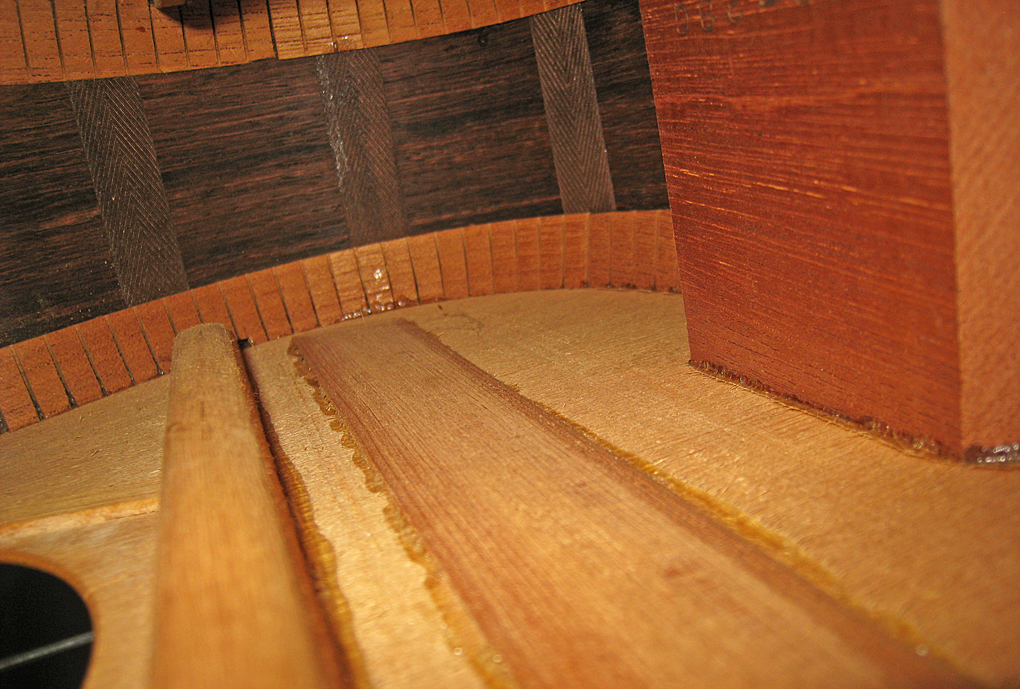
1962 Martin 000-28C
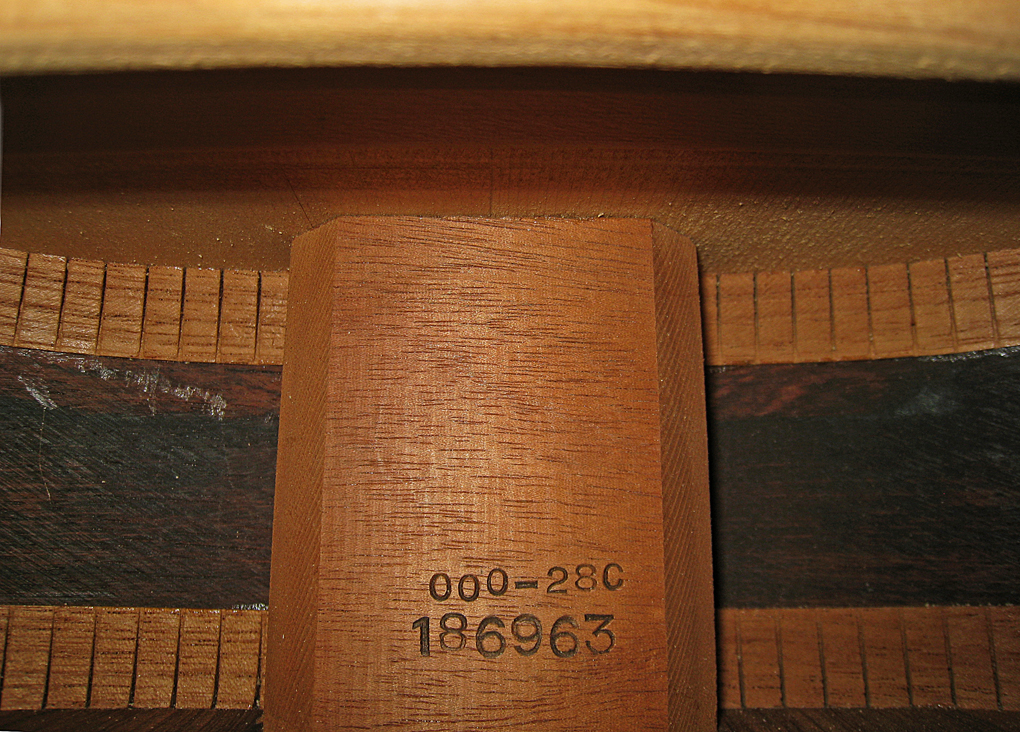
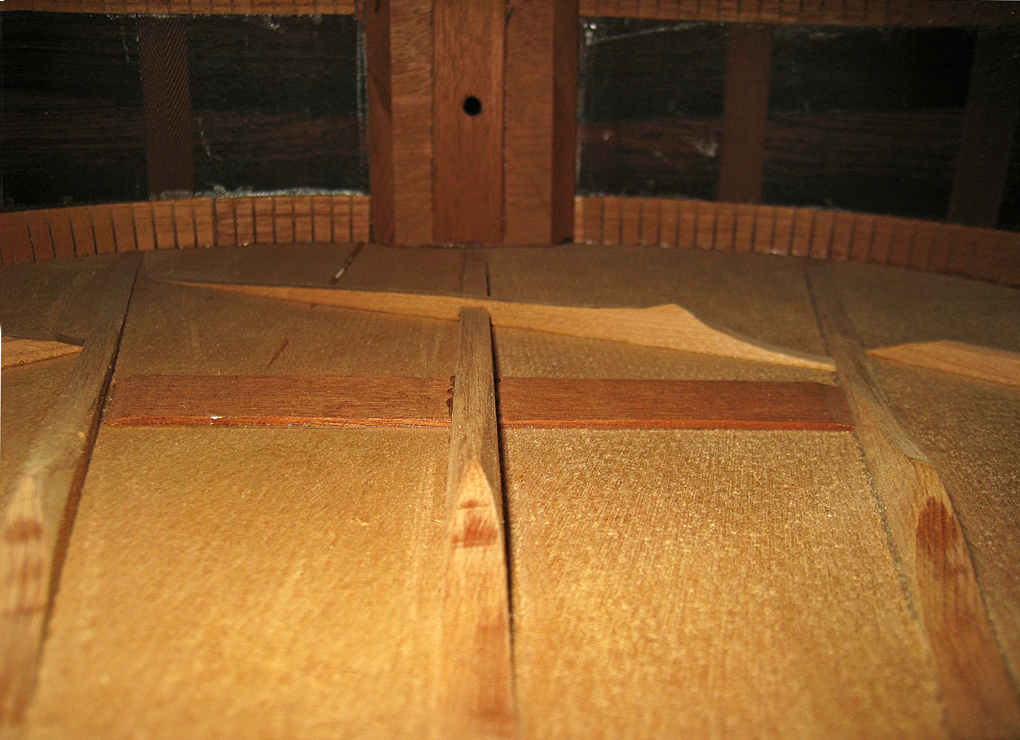
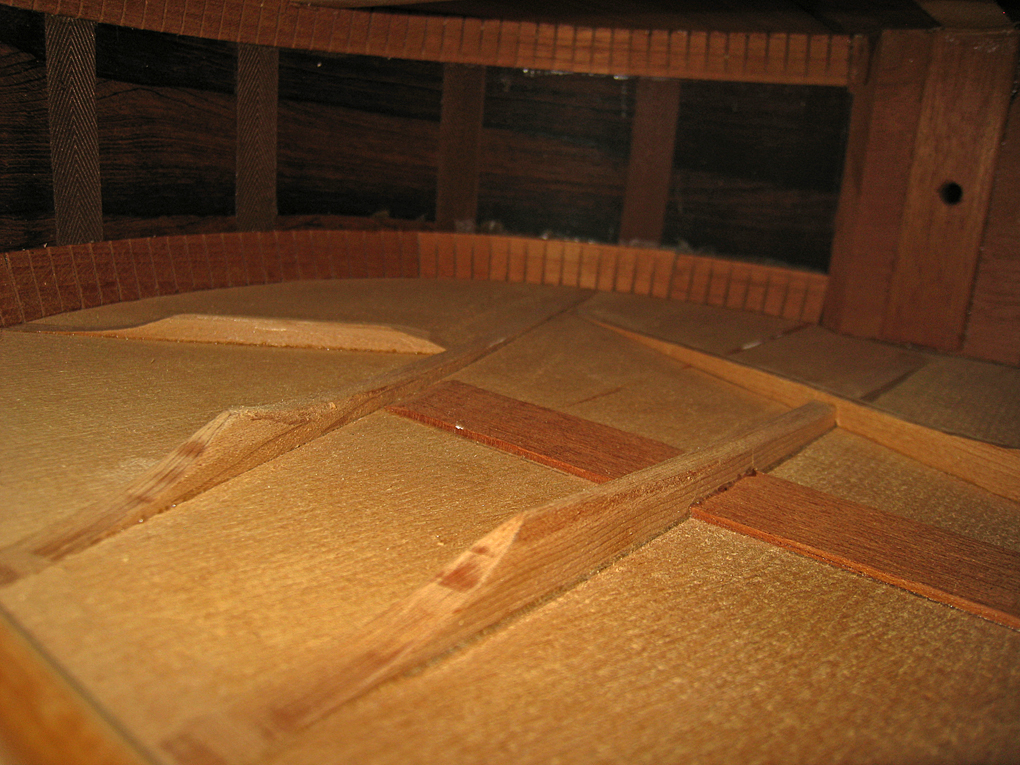
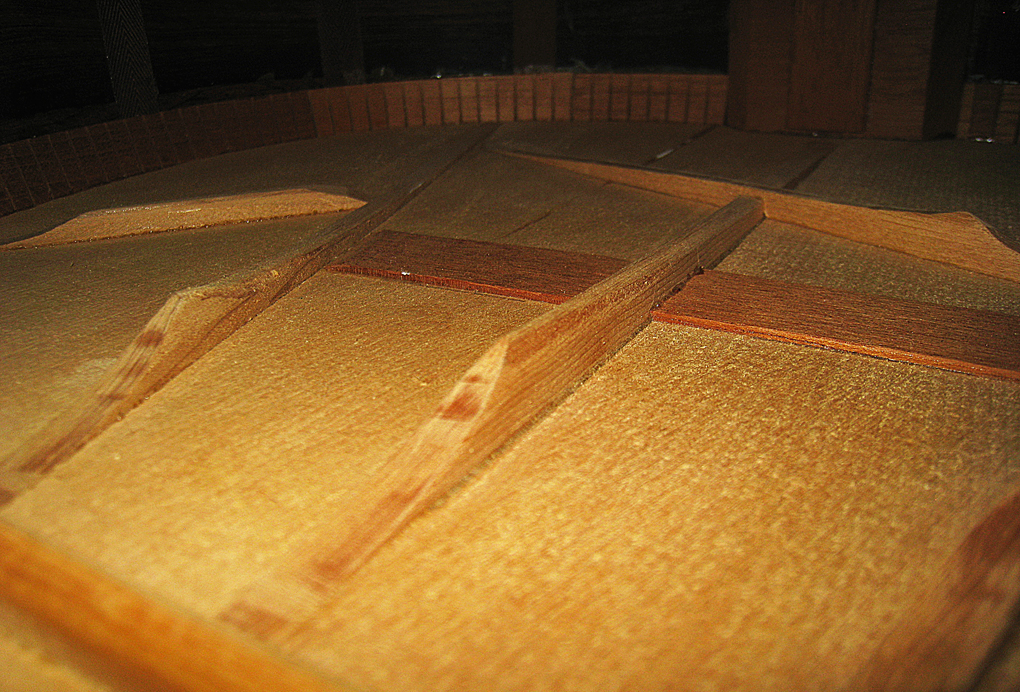
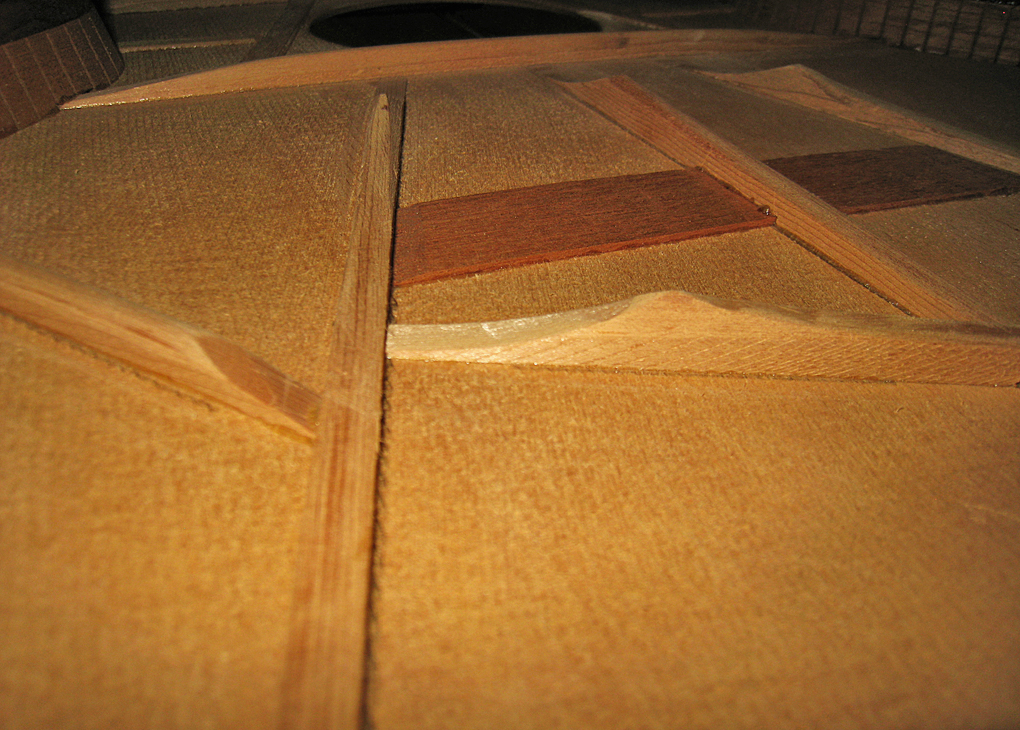
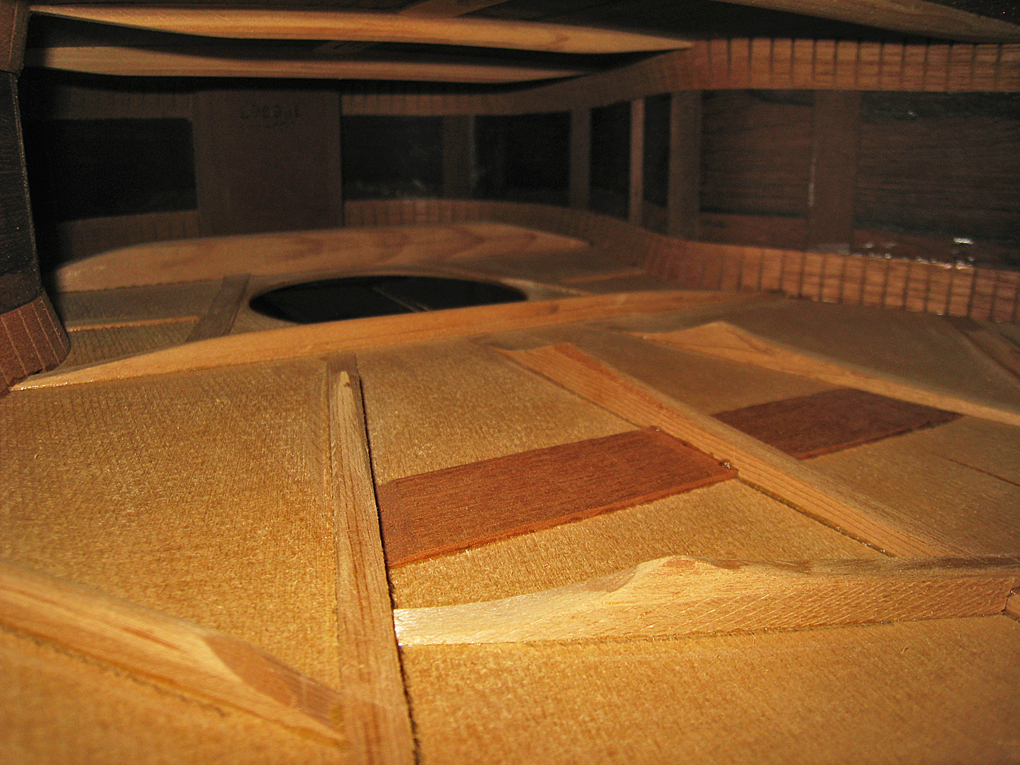
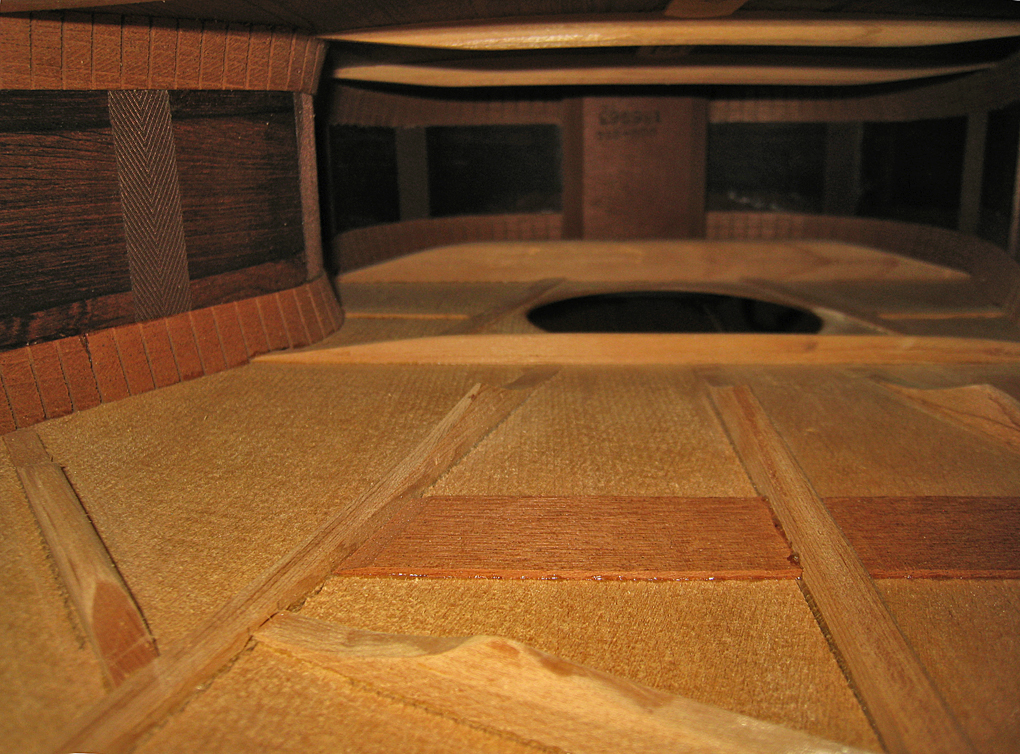
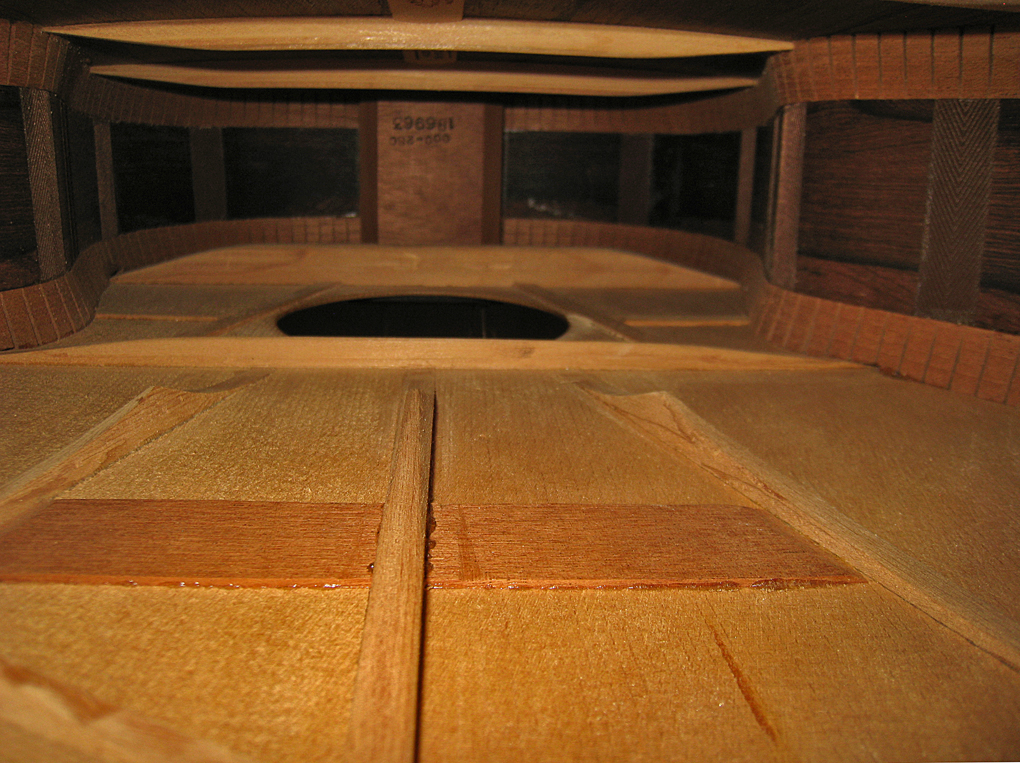
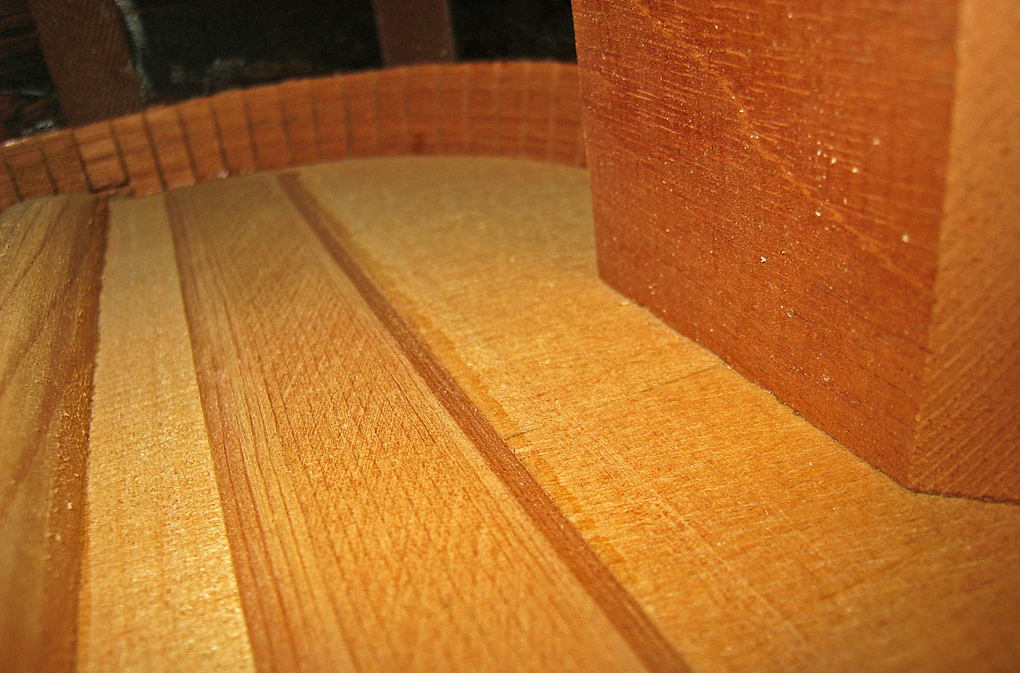
1968 N-20
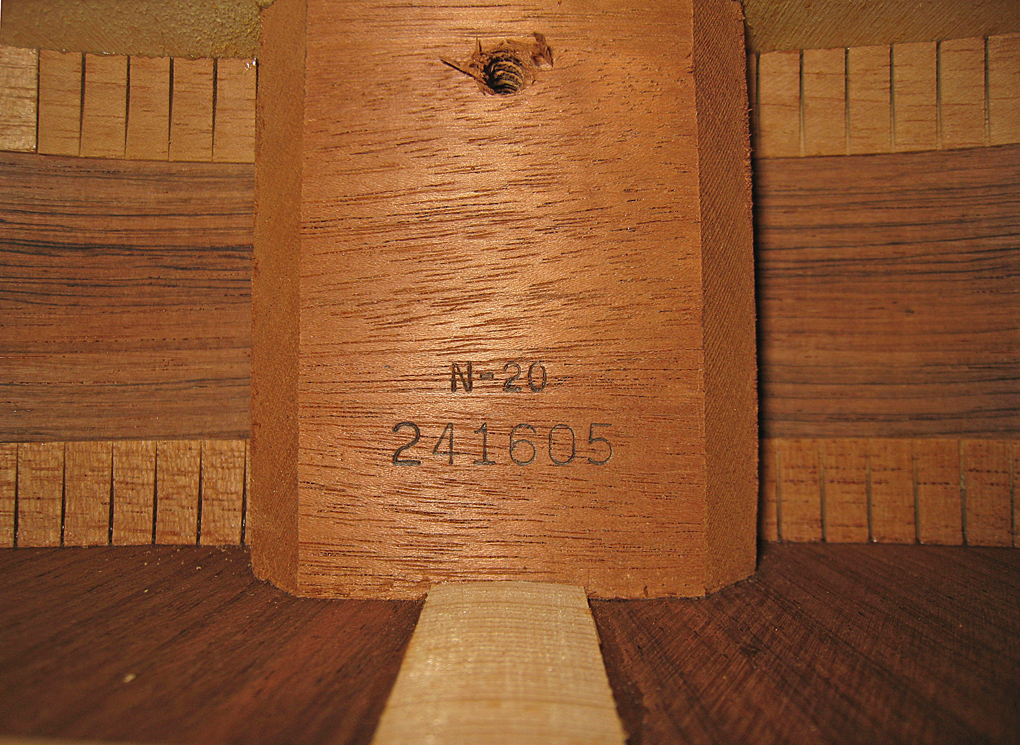
The N-20 has seven ribs: a long scalloped center rib, with a short one on either side, surrounded by a longer scalloped one on either side, with one more long thin one on either side which extends under the soundhole brace all the way to brace the on the top of the soundhole, with the scallop all the way up next to the soundhole. Interesting that the three cross braces, including the scalloped tone bar, are all parallel.
The N-20 has no bridge plate.
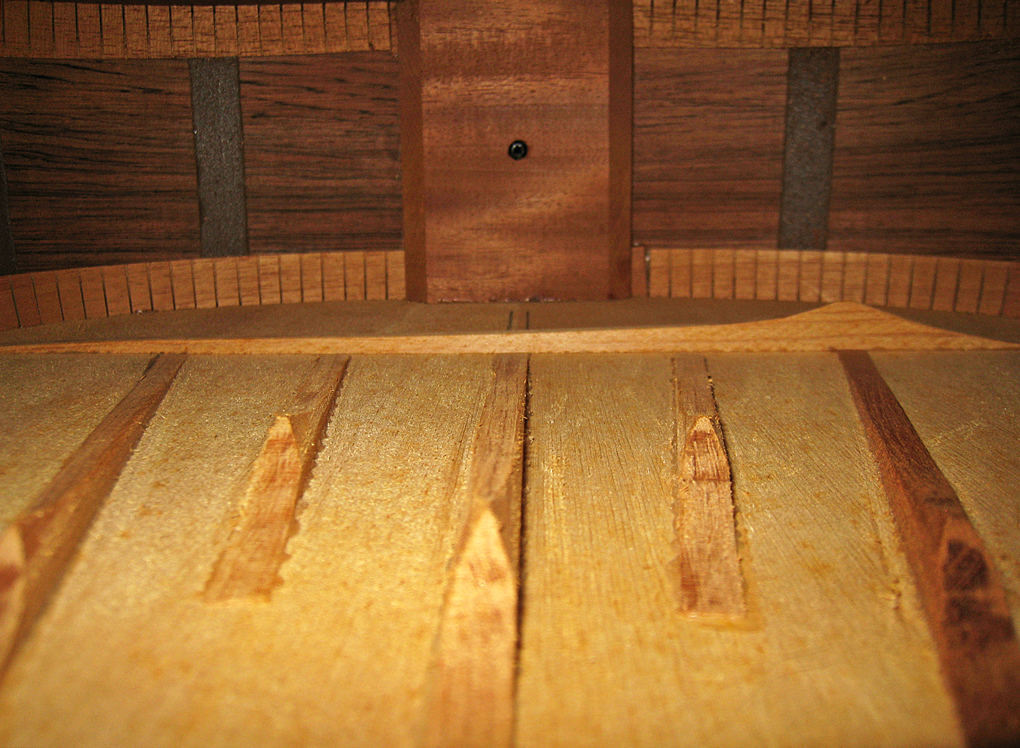
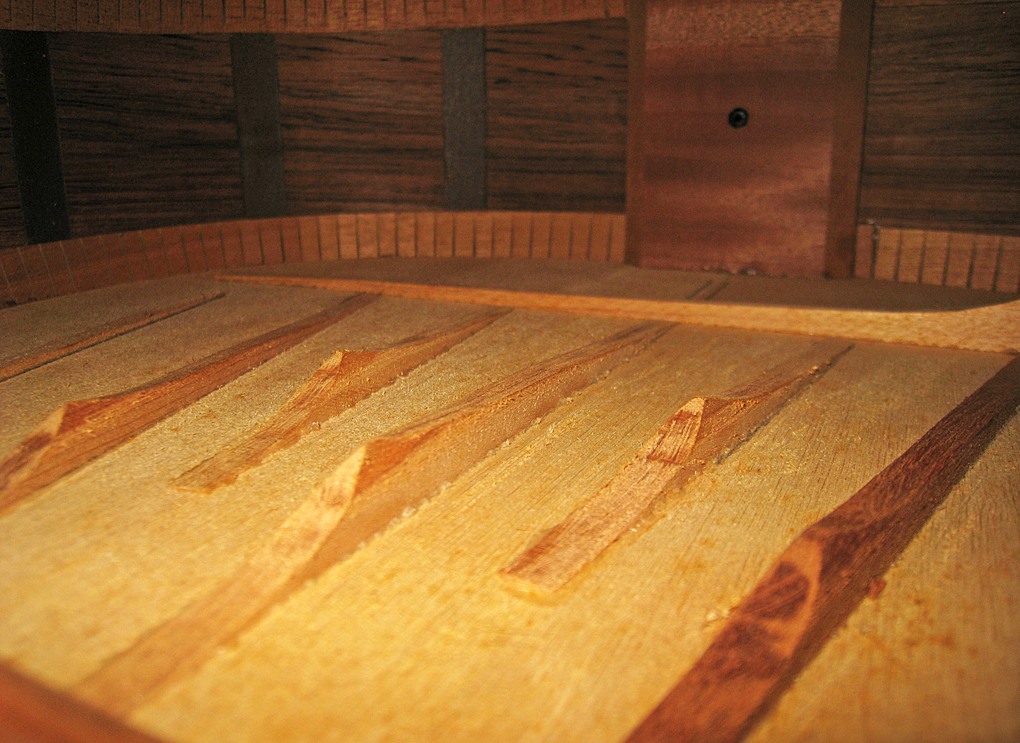
Note that the last two braces are mahogany.
The braces may appear parallel in some photos, but are angled slightly inward.
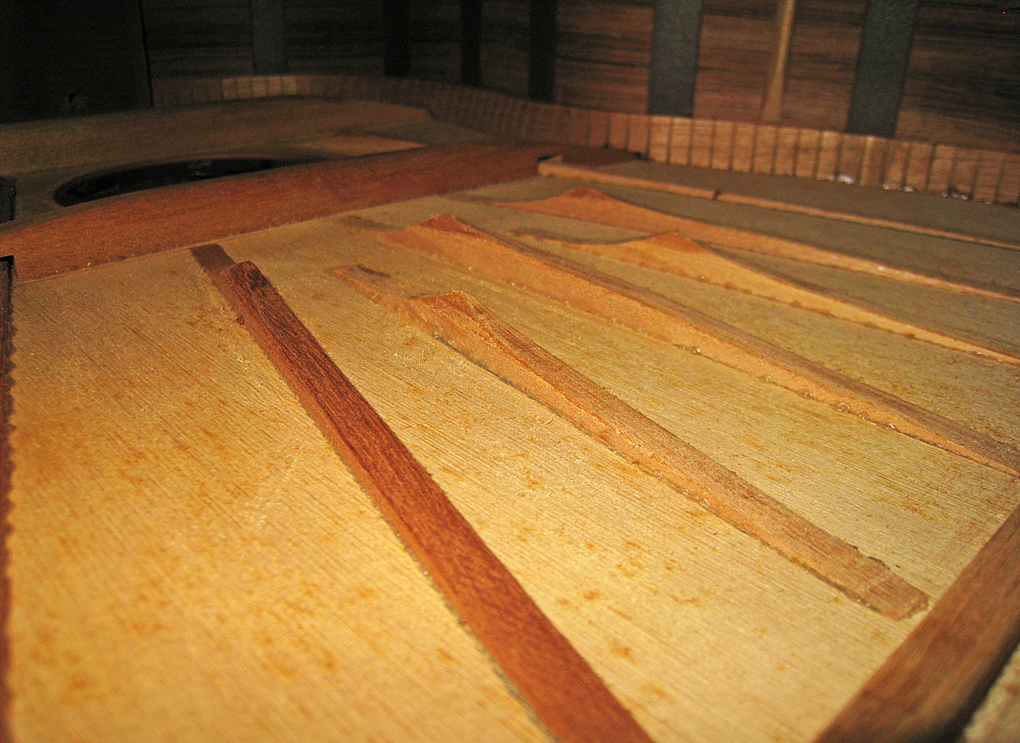
You can see here the tip of the long side brace extending to the brace above the soundhole…
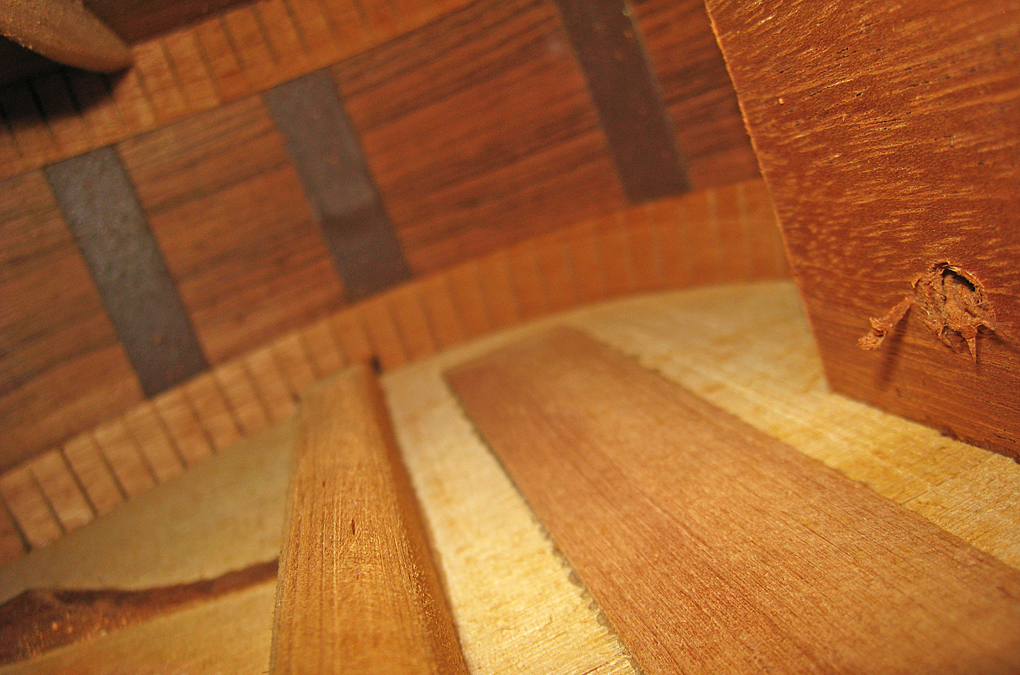
I’ve also discovered one wood side brace on either side, something I’ve only seen on 1840’s Martins with two piece sides. Martin usually uses woven cloth strips, but these look more like brown vinyl, like a Naugahyde.
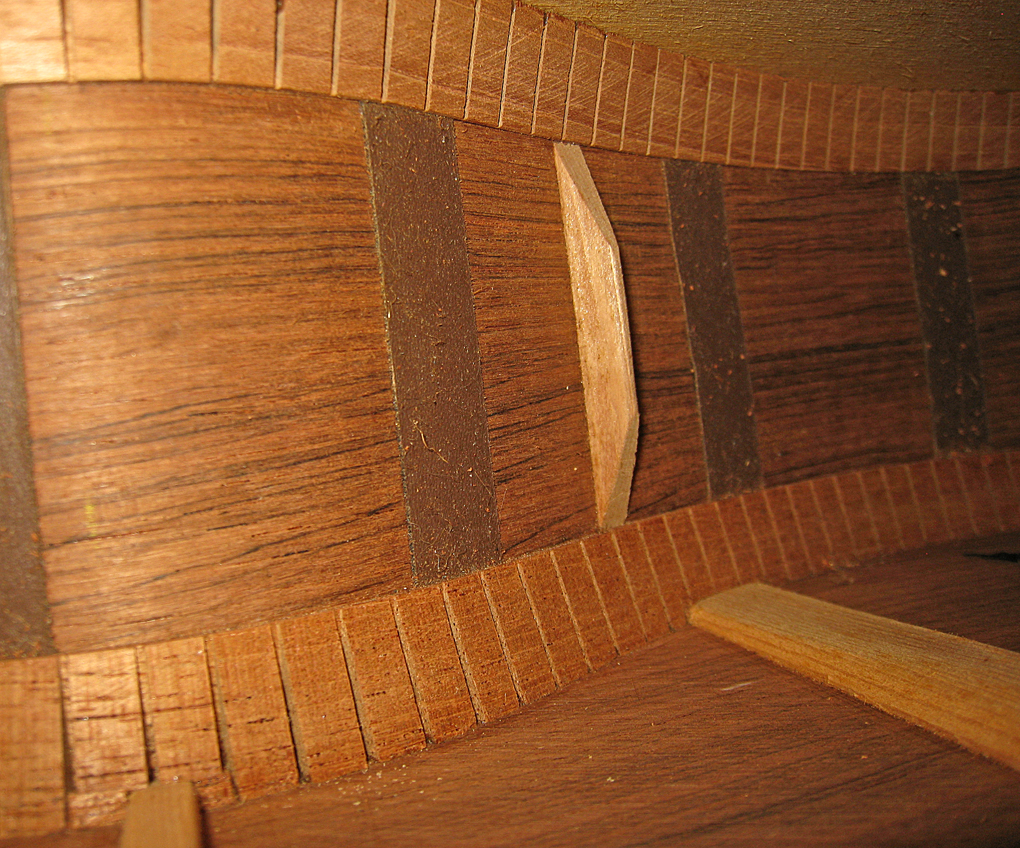
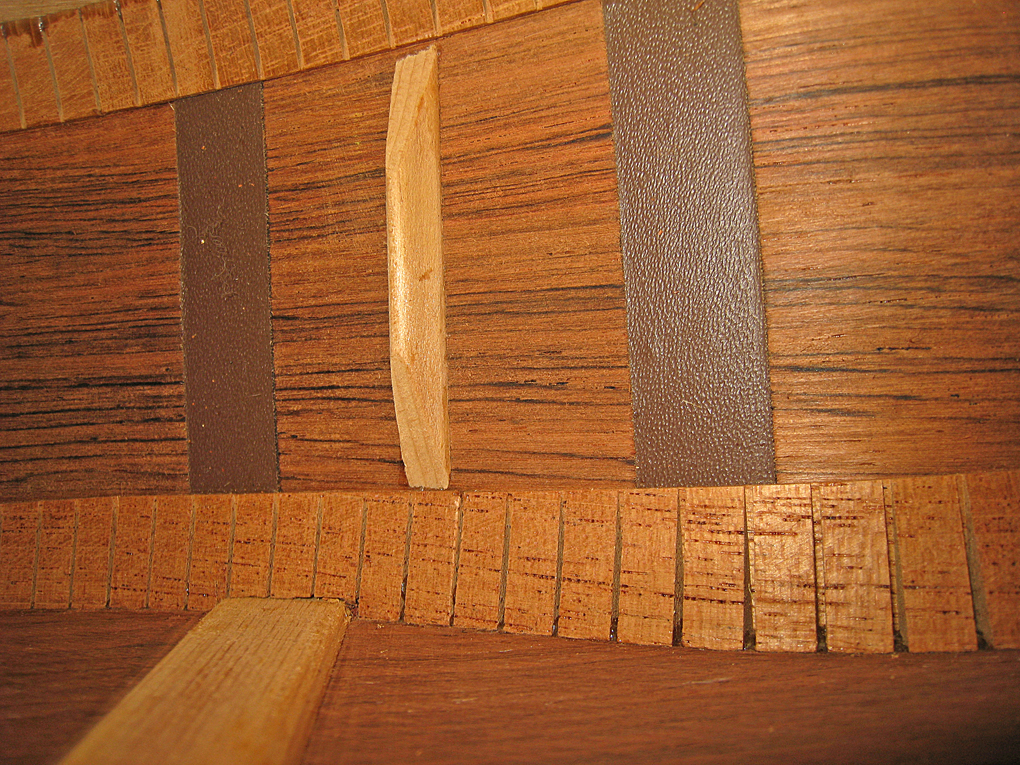
The cut out fretboard end is a feature borrowed from some "Husdon Street" Martins of the 1830's
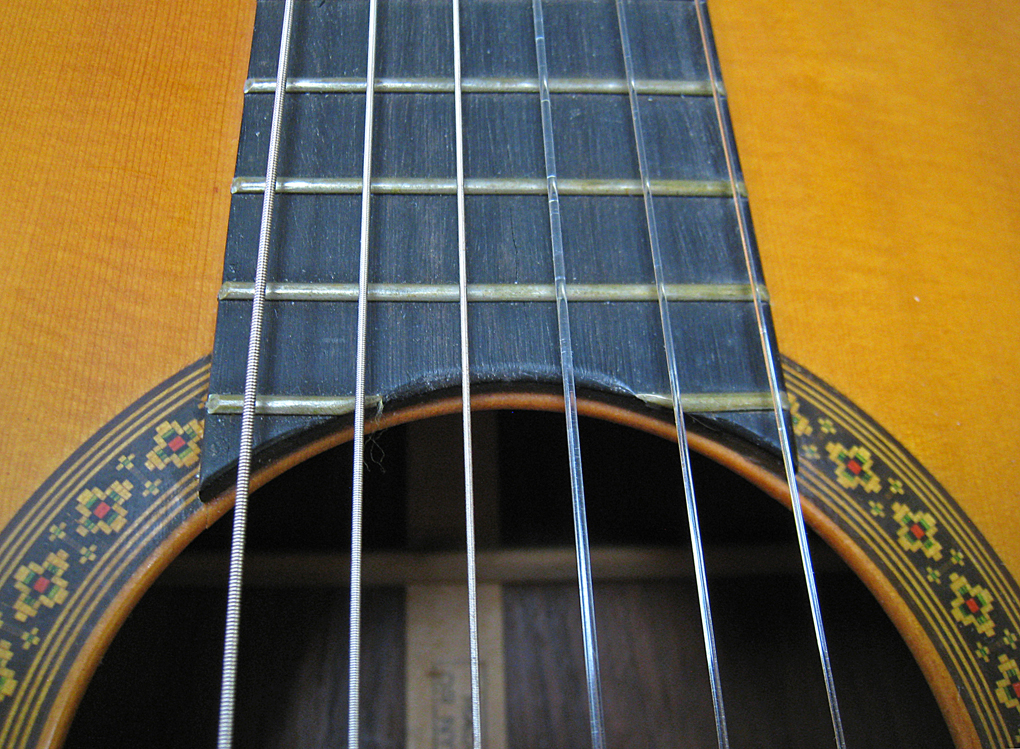

earlymartin.com
To See Robert Corwin's Classic Photography of Folk and Roots Musicians, visit:
For Information on Photography for
Exhibition, Publication, CD's, Promotion, Web Pages, Tour Books,
to Purchase Photographic Prints, or
If You Have Questions About An Early Martin Guitar:
e-mail: Robert Corwinentire site copyright ©1998 through 2015 Robert Corwin/Photo-Arts. All rights reserved.